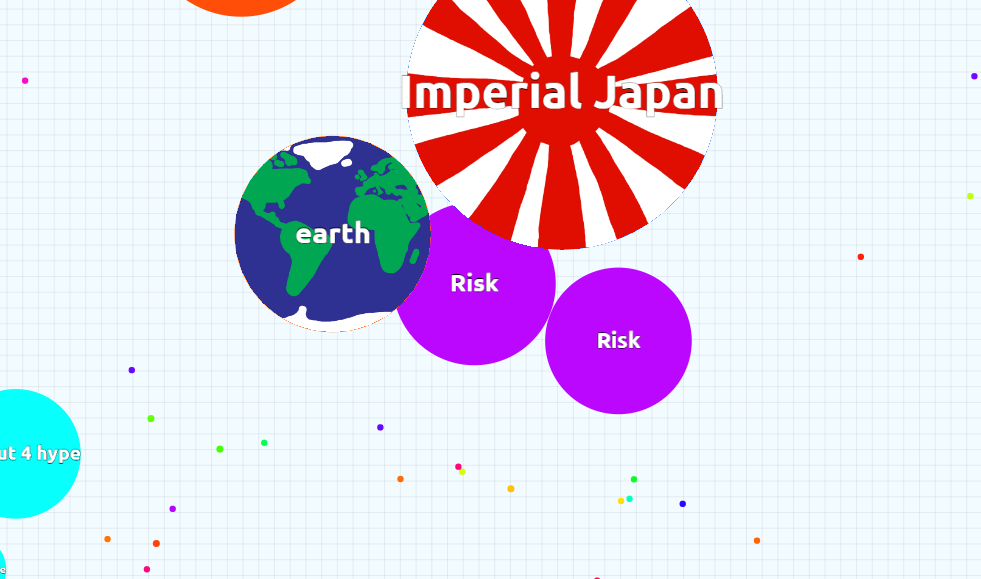Agario, Artificial Societies, and Risk

Agario is a game where players spawn as a small dot in a large, two-dimensional grid environment. The goal of the game is to survive by consuming smaller dots, which consequently make you larger. These smaller dots are scattered throughout the map, and may or may not be one of the other hundred people playing along with you. If you're interested in learning more about the game I encourage you to try it out for yourself.
What I find most interesting about Agario is how it undeniably resembles the artificial societies used to study human behavior. Data from these societies can be quite telling; for example, a 1986 study used such a model to learn that hunters-gatherers could pool resources to significantly mitigate risks in the form of variation.[1] A more recent study used a similar model to find that risk-averse agents, on average, went on to live much longer lives than their shorter-lived counterparts.[2]
If you're like me, and wonder if there might be some evolutionary reasons or benefits to our risk-averse predilections[3], the above studies may offer key insights. The difference between these simulation-based artificial societies and Agario, is that the latter uses actual humans to control the agents. I personally think it would be interesting to see how the data compare.
Do risk-averse players live longer (on average) than risk takers? Does sharing, or teaming up help with longevity? What are some interesting questions that you might have for such data?